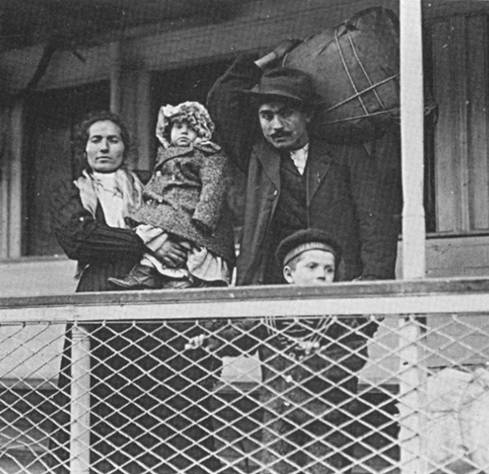History 1700 MacKay
 Economic Systems in the U.S. 1860s to present
Economic Systems in the U.S. 1860s to present
Readings:
History 1700 MacKay
Economic Systems in the U.S. 1860s to present
Readings:
You might also be interested in:
For further Information about the stock market
For information on relative costs/market values in American History: How much is that?
We will consider: Definitions of economic systems/ The gap between rich and poor/ Poverty in America/ The American Dream/ The Great Society

Definitions of economic systems from AmosWEB and Wikipedia
Corporation: One of the three basic forms of business organization (the other two are proprietorship and partnership). A corporation is a business established through ownership shares (termed corporate stock). Since Supreme Court rulings in the 1870s, A corporation is considered a distinct legal person, that can be sued, forced to pay taxes, etc., just like a human person. Unlike proprietorships and partnerships businesses, a corporation business exists separately from its owners. As such, the owners have what lawyer-types term limited liability. Owners can not be held personally responsible for corporate debts. The owners can only lose the value of their ownership shares, but no more.
Further information:
Consumption: The use of resources, goods, or services to satisfy wants and needs. At the microeconomic level, consumption is primarily analyzed in the context of utility, demand and their importance to market exchanges. At the macroeconomic level, consumption is most important as expenditures by the household sector on gross domestic product, one of four aggregate expenditures (the other three being investment, government purchases, and net exports).
Socialism develops in the 19th century as a critique of capitalism -advocates a system of collective or government ownership and management of the means of production and distribution of goods. Because of the collective nature of socialism, it is to be contrasted to the doctrine of the sanctity of private property that characterizes capitalism. Where capitalism stresses competition and profit, socialism calls for cooperation and social service. In a broader sense, the term socialism is often used loosely to describe economic theories ranging from those that hold that only certain public utilities and natural resources should be owned by the state to those holding that the state should assume responsibility for all economic planning and direction.
Globalization is a modern term used to describe the changes in societies and the world economy that result from dramatically increased international trade and cultural exchange. It describes the increase of trade and investing due to the falling of barriers and the interdependence of countries. In specifically economic contexts, it is often understood to refer almost exclusively to the effects of trade, particularly trade liberalization or "free trade." Between 1910 and 1950, a series of political and economic upheavals dramatically reduced the volume and importance of international trade flows. But starting with WWI and continuing through WWII, when the Bretton Woods institutions were created (i.e. the IMF, International Monetary Fund, and GATT, the General Agreement on Trade and Tariffs ), globalization trends reversed. In the post-World War II environment, fostered by international economic institutions and rebuilding programs, international trade dramatically expanded--incurring benefits and disruptions. The other key aspect of globalization is changes in technology, particularly in transport and communications, which it is claimed are creating a global village.
Globalization is the increasing world-wide integration of markets for goods, services, labor, and capital. It is an ongoing process that started several centuries ago. However, most people would agree that today we are in a period of rapid globalization as international economic activity has accelerated in the last 200 years or so.
 The New Immigrants
The New Immigrants
In 1900, 14 percent of the American population was foreign born, compared to 8 percent a century later. Passports were unnecessary and the cost of crossing the Atlantic was just $10 in steerage.
European immigration to the United States greatly increased after the Civil War, reaching 5.2 million in the 1880s then surging to 8.2 million in the first decade of the 20th century. Between 1882 and 1914, approximately 20 million immigrants came to the United States. In 1907 alone, 1.285 million arrived. By 1900, New York City had as many Irish residents as Dublin. It had more Italians than any city outside Rome and more Poles than any city except Warsaw. It had more Jews than any other city in the world, as well as sizeable numbers of Slavs, Lithuanians, Chinese, and Scandinavians.
Unlike earlier immigrants, who mainly came from northern and western Europe, the "new immigrants" came largely from southern and eastern Europe. Largely Catholic and Jewish in religion, the new immigrants came from the Balkans, Italy, Poland, and Russia.
(from Digital History: http://www.digitalhistory.uh.edu/database/article_display.cfm?HHID=415)
The gap between the rich and the poor during the late 19th century can be expressed in:
| Monthly budget of a laborer, his wife, and one child in 1891; his income is $23.67 | Monthly budget of a married bank accountant with no children 1892; his income is about $66.50 |
| Food | $6.51 | Food | $13.22 |
| Rent | $9.02 | Rent | $9.88 |
| Taxes and insurance | $3.32 | Taxes and insurance | $7.11 |
| Utilities | $2.94 | Utilities | $4.99 |
| Transportation | $.08 | Transportation | $1.71 |
| all else= total | $28.01 | all else = total | $43.17 |
Source: Zunz, The Changing Face of Inequality, 1982
|
| 1870 | 1880 | 1890 | 1900 |
| WORKING CLASS 53.3%
FARMER 32.0% |
WORKING CLASS 52.3%
FARMER 32.1% |
WORKING CLASS 54.3%
FARMER 26.3% |
WORKING CLASS 53.2%
FARMER 25.3% |
Source: U.S. Bureau of the Census
The twentieth century witnessed a significant, yet unsteady, decline in the overall incidence of poverty (as well as a dramatic improvement in the acquisition of data bearing on the issue). Increases in real wages permitted many blue-collar Americans to cross the poverty line during the first quarter of the century, but the Great Depression reversed the gains that had been made. When Franklin D. Roosevelt proclaimed, in 1937, that "one-third" of the nation was "ill-housed, ill-clad, ill-nourished," he was understating the problem: in fact, the poverty rate was probably closer to 40 or 45 percent. After the Great Depression, however, the proportion of Americans living in poverty dropped sharply: according to government statistics, the figure stood at 30 percent in 1950, 20 percent in 1960, 13 percent in 1968, and 11 percent in 1973. Although these percentages meant that millions of people remained poor (23 million lived in official poverty in 1973), they suggested that the extraordinary growth of the economy between 1940 and the early 1970s was gradually eradicating the problem. Unfortunately, this benign statistical trend came to a halt in the 1970s and reversed itself after 1980. During the depression of the early 1980s, the poverty rate rose above 15 percent; in 1988, well after the depression had ended, it stood at 13 percent, reflecting the poverty of 32 million people—8 million more than had been officially poor a decade earlier.
The most significant policy changes to occur in modern American history were those promulgated during the New Deal. Responsibility for providing aid to the poor was, to a considerable degree, shifted from municipalities and states to the federal government; the unemployed and the elderly were provided with social insurance; public assistance for some of the disabled and infirm, as well as dependent children, became an "entitlement." These programs vastly enlarged the support available to the poor and, coupled with the rapid economic growth that began in 1940, led many Americans to conclude that poverty was a problem of the past. The rediscovery of poverty amidst great plenty in the 1960s came then as a shock to middle-class Americans, a shock that helped launch attacks on poverty by the Kennedy and Johnson administrations. Lyndon B. Johnson's War on Poverty—an assembly of large-scale federal programs targeted at a variety of subpopulations—achieved some tangible results, but it did not come close to its widely publicized goal of conquering the problem. In its aftermath, few innovative or significant public policies were put into place; indeed, one of the central tenets of the Republican administrations of the 1970s and 1980s was that the problem of poverty was best addressed by promoting private-sector economic growth.
Just why poverty has been so persistent—why more than 30 million people remain poor—is a much-debated issue. Some analysts have argued that the rate of economic growth has been insufficient to eradicate poverty, whereas others maintain that the cause resides more in the maldistribution of income. Some see the poor as lacking the skills or the will to escape their condition; others see the economy as dependent upon the poor to provide a low-wage labor force for industry and agriculture. Some critics have argued that government programs have not been sufficiently extensive or adequately funded to achieve their goals; others have claimed that such programs were always designed not to cure the problem but to discipline and regulate the poor. This lack of agreement, about the diagnosis and the prescription, has long been characteristic of twentieth-century public discourse about poverty. Yet, as the century drew to a close, both policy experts and the citizenry as a whole seemed to be less optimistic than they once were that the problem could, or would, be eradicated at all.
Robert H. Bremner, From the Depths: The Discovery of Poverty in the United States (1956); Gary B. Nash, The Urban Crucible: Social Change, Political Consciousness, and the Origins of the American Revolution (1979); James T. Patterson, America's Struggle against Poverty, 1900-1980 (1981).
Budgeting for Poverty
The federal government says a family of four making $18, 810 a year is living in poverty. How far does $18, 810 go in America today? (Source:Catholic Campaign for Human Development)
|
Housing |
$5, 274 |
|
Utilities |
$2, 350 |
|
Transportation |
$4, 852 |
|
Food |
$4, 815 |
|
Health Care |
$793 |
|
Child Care |
$2,030 |
|
What did you leave out? |
School supplies, clothes, education, life insurance, furnishings, recreation, cleaning supplies, birthday gifts |
The traditional American Dream once focused on greater security, opportunity and happiness. Increasingly, that dream has been supplanted by an extraordinary emphasis on acquisition. The recent commercial definition of the American Dream has hidden costs for the environment, our quality of life, and our efforts to create a just and equitable society.
Recent scientific estimates indicate that at least four
additional planets would be needed if each of the planet's 6 billion inhabitants
consumed at the level of the average American.
The Great Society was a set of domestic programs enacted in the United States on the initiative of President Lyndon B. Johnson.
Johnson summarized his goals in a speech at Ann Arbor, Michigan in 1964, basing it loosely on the largely successful New Deal instituted by Franklin Roosevelt. A main focus of the Great Society social reforms an "end to poverty and racial injustice." One component that transformed American politics was the Voting Rights Act of 1965. Another Johnson success was the establishment of the Department of Housing and Urban Development.
Other programs included:
The Great Society was never fully funded because of the Vietnam War, during the period of most active American involvement 1965-1975, which drained available resources. The program was heavily criticized by conservatives like Charles Murray who denounced it in his 1984 book Losing Ground as being ineffective and creating an underclass of lazy citizens. One of Johnson's aides, Joseph A. Califano, Jr., has countered that, "from 1963 when Lyndon Johnson took office until 1970 as the impact of his Great Society programs were felt, the portion of Americans living below the poverty line dropped from 22.2 percent to 12.6 percent, the most dramatic decline over such a brief period in this century."
The Great Society was later partially overturned by President Ronald Reagan's first budget.The overturning was by and large the work of David Stockman, who in the Omnibus Budget and Reconciliation Act (OBRA) of 1981 cut funding for many welfare programs.